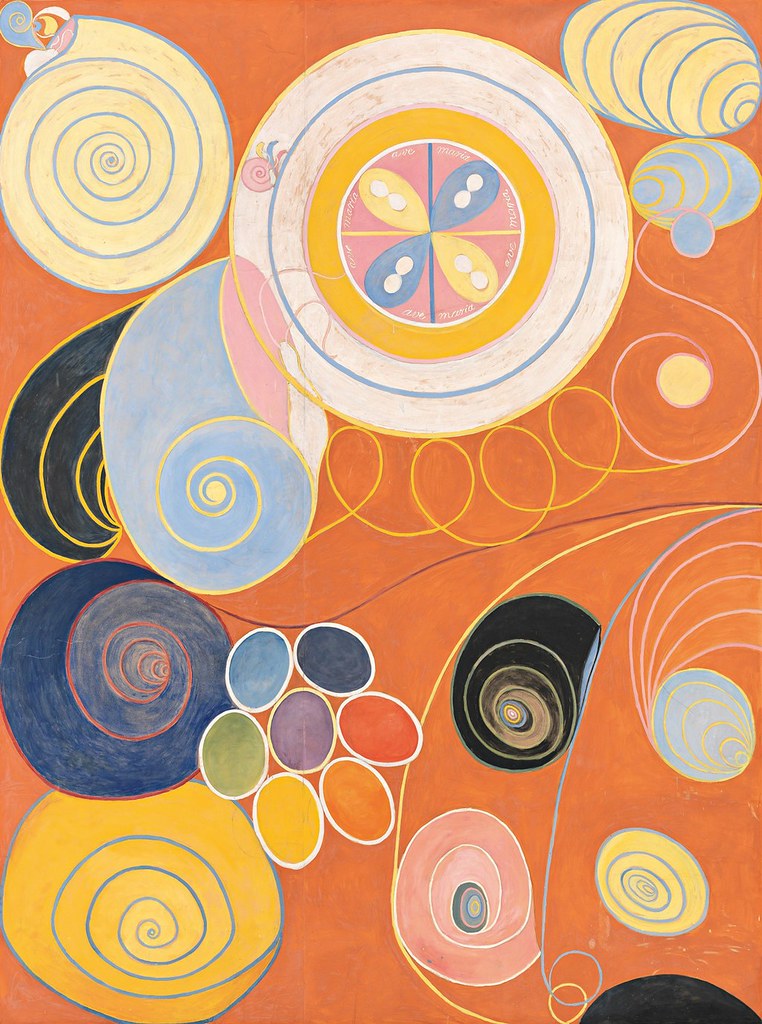Jean-Michel Basquiat: The Meteoric Talent Lost Too Soon

Jean-Michel Basquiat’s painting “Untitled” (1982) sold for a jaw-dropping $110.5 million in 2017, cementing his place in art history. Basquiat was the talk of New York’s art scene, hailed as a prodigy by critics and collectors alike. But after this explosive debut, he struggled with the intense pressure that came with fame. Basquiat’s life became a whirlwind of gallery openings, parties, and media attention, but he found it difficult to replicate the magic of his first masterpiece. Tragically, he died of a heroin overdose at just 27 in 1988, leaving the world wondering what more he could have created. Many believe the weight of sudden success and relentless expectation pushed him away from the spotlight. Today, Basquiat is remembered as a symbol of both brilliance and the dangers of artistic stardom. His story is often cited in discussions about mental health in the art world.
R.B. Kitaj: The Isolation After “If Not, Not”

R.B. Kitaj stunned critics with his haunting painting “If Not, Not” in 1975, which was hailed as a modern masterpiece. The painting’s bold imagery and cryptic symbolism sparked endless debate in art circles. Despite this acclaim, Kitaj’s later exhibitions were met with fierce criticism, especially during his 1994 Tate retrospective. Hurt by the backlash, Kitaj withdrew from the public eye and moved to Los Angeles, rarely exhibiting again. He once said, “I felt like a pariah in the city that had given me so much.” Kitaj’s withdrawal highlights how critical reception can deeply impact an artist’s willingness to share their work. His disappearance from the European art scene was as sudden as his rise, and his fans still wonder how much more he might have contributed.
David Wojnarowicz: Silence After “Untitled (Buffaloes)”

David Wojnarowicz’s “Untitled (Buffaloes)” became an iconic piece associated with the AIDS crisis and political activism in the late 1980s. The artwork’s raw emotion and searing commentary captured the pain of an entire generation. After its powerful debut, Wojnarowicz became increasingly withdrawn, focusing on personal writings and smaller, less public projects. Diagnosed with AIDS, he struggled with both his health and the political climate’s hostility toward LGBTQ+ artists. Wojnarowicz died in 1992 at just 37, leaving behind a legacy of courage and resistance. His vanishing act was not so much a choice as a response to a hostile world, and his absence is still deeply felt in contemporary art activism.
Lee Krasner: The Shadow of “The Seasons”

Lee Krasner’s 1957 painting “The Seasons” is often described as a masterwork of Abstract Expressionism. Yet, after its critical success, Krasner’s career slowed dramatically. Some art historians argue that living in the shadow of her husband, Jackson Pollock, and the sexism of the era contributed to her retreat from the limelight. Krasner herself once remarked, “I was always Mrs. Pollock when I wanted to be Lee Krasner.” She continued to paint but rarely enjoyed the same level of attention as with “The Seasons.” Her later works were quietly exhibited, but the world’s gaze had shifted. Krasner’s story is a powerful example of how societal forces can sideline even the most talented artists.
Henry Darger: The Secret Genius Behind “The Story of the Vivian Girls”

Henry Darger was a recluse whose epic illustrated novel “The Story of the Vivian Girls” was only discovered after his death in 1973. The sheer scale—over 15,000 pages and hundreds of watercolor paintings—astonished art historians. Darger never sought fame and lived a quiet life as a hospital janitor in Chicago. No one even suspected his artistic genius until his landlord found the works in his apartment. Since then, Darger has become a cult figure in outsider art, but he never created another major piece or engaged with the art community during his lifetime. His vanishing act was total—he hid in plain sight, leaving the world to discover his brilliance only after he was gone.
Judith Leyster: The Mystery of the Lost Dutch Master

Judith Leyster’s 1633 painting “The Proposition” is now recognized as a feminist masterpiece, challenging the male-dominated art world of her time. After this astonishing work, Leyster’s career seemed to vanish. For centuries, her paintings were attributed to male contemporaries like Frans Hals. Only in the late 19th century did art historians begin to uncover her true identity. Leyster stopped painting professionally after her marriage in 1636, a common fate for women artists of her era. Her disappearance was a product of society’s limitations rather than her own choice. Today, Leyster’s story resonates as an example of lost female talent and the struggle for recognition.
Richard Dadd: The Madness Behind “The Fairy Feller’s Master-Stroke”

Richard Dadd’s “The Fairy Feller’s Master-Stroke,” completed in 1864, is a mesmerizing example of Victorian fantasy art. But shortly after finishing it, Dadd’s life took a dark turn. He was institutionalized after suffering from severe mental illness, which led him to murder his own father. Dadd continued to paint in the asylum, but never produced anything as celebrated as “The Fairy Feller’s Master-Stroke.” His disappearance from the public art scene was abrupt and tragic, and his story is often cited in discussions about the link between creativity and mental health. The painting itself remains at the Tate Britain, admired by those who wonder what more he could have created if not for his illness.
Georges Seurat: Pointillism’s Sudden End

Georges Seurat changed the art world forever with “A Sunday Afternoon on the Island of La Grande Jatte” in 1884. This pointillist masterpiece brought him instant fame and inspired a whole new movement. But Seurat’s career was shockingly brief—he died at just 31, reportedly from an infectious disease. After his breakthrough, he completed only a handful of smaller works. The sudden loss stunned his contemporaries, who saw Seurat as the future of modern painting. His early death left countless artistic questions unanswered, and his followers have spent decades analyzing what might have been the next step for pointillism.
Eva Hesse: The Frailty Behind “Expanded Expansion”

Eva Hesse’s 1969 sculpture “Expanded Expansion” is hailed as one of the most groundbreaking minimalist works of the 20th century. Critics praised her use of unconventional materials like latex and fiberglass. However, Hesse’s career was tragically cut short when she died of a brain tumor at just 34 in 1970. After the immense impact of “Expanded Expansion,” Hesse’s health rapidly declined, and she was unable to continue working. Her absence left a void in the minimalist movement, and her story is a sobering reminder of how fleeting genius can be. Hesse’s work is now studied for its innovation and vulnerability.
Robert Gober: The Silence After “Untitled Leg”

Robert Gober’s 1989 sculpture “Untitled Leg”—a hyper-realistic, disembodied human limb—shocked and fascinated visitors at the Museum of Modern Art. The piece was described as “uncannily alive” and sparked a wave of interest in body-focused sculpture. But after this sensational debut, Gober retreated from the public eye, rarely giving interviews or making major public appearances. He continued to create, but on a smaller scale, focusing on private commissions and quiet installations. Friends say Gober was overwhelmed by the sudden spotlight and chose a quieter, more contemplative life. His story is an example of an artist choosing privacy over constant exposure.
Giorgio Morandi: The Quiet Life After “Still Life”

Giorgio Morandi’s “Still Life” (1946) is considered a high point of modern Italian painting. The painting’s subtle arrangement and muted tones left critics in awe. However, Morandi chose to live a reclusive life in Bologna, rarely leaving his hometown or participating in the international art scene. After “Still Life,” he continued painting, but with little variation, shunning fame and preferring a simple, almost monastic existence. Morandi’s disappearance was more a gentle fade than a dramatic exit. He became known as the “painter of silence,” embodying the idea that sometimes, an artist’s greatest statement is to let their work speak for itself.
Hilma af Klint: The Forgotten Pioneer of Abstraction

Hilma af Klint created her masterpiece series “The Paintings for the Temple” between 1906 and 1915, anticipating abstract art by years before artists like Kandinsky or Mondrian. Yet, af Klint insisted her work remain hidden until at least 20 years after her death, fearing the public wasn’t ready. She died in 1944, and her paintings were largely unknown until a 2013 retrospective brought her international acclaim. Af Klint never saw her vision celebrated during her lifetime, vanishing from the art world by her own design. Her rediscovery is now considered one of the great revelations in modern art, showing how some masterpieces wait decades to be truly seen.
End.







